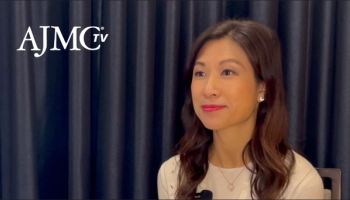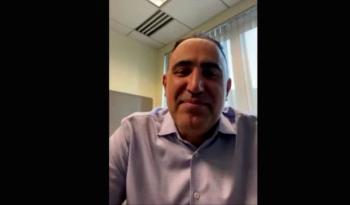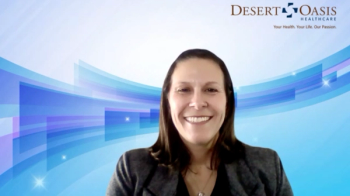
FLAME Trial Results: Validation and Clinical Application of Eosinophil Counts
Alexander Mathioudakis, MD, PhD, clinical lecturer in respiratory medicine at The University of Manchester, shares findings from the FLAME trial on blood eosinophil changes in patients with chronic obstructive pulmonary disorder.
The findings from the FLAME trial highlight the importance of variability and responsiveness of blood eosinophil levels in patients with chronic obstructive pulmonary disorder (COPD) treated with inhaled corticosteroids (ICS), says Alexander Mathioudakis, MD, PhD, clinical lecturer in respiratory medicine, The University of Manchester.
This transcript was lightly edited.
Transcript
Why do you believe that certain conditions, such as ICS treatment, may lead to suboptimal blood eosinophil measurements in patients with COPD?
Blood eosinophils are a very useful biomarker in COPD, but they have specific features that we need to know in order to use them as best as we can. One of these features is that they have variability over time, and that's the reason why we tend to use multiple measurements in order to guide our treatment decisions. Another feature that we have identified in post hoc analysis of the
So this has an important message, and the message is that when we are considering discontinuing inhaled corticosteroids in COPD, we need to keep in mind that blood eosinophils that will have been measured on ICS treatment may misclassify 1 in 10 patients, meaning that they may be high in people that do not respond or low in some people that respond to inhaled corticosteroids.
Do you think that eosinophil change on ICS treatment should be used in clinical practice to guide ICS use for COPD?
We have done 2 exploratory post hoc analyses that showed a strong association of eosinophil change with treatment response, but they are still exploratory. So, I think before using this biomarker in clinical practice, we need to validate it prospectively.
Now as clinicians, we do need to have this association in mind, and perhaps when we want to discontinue inhaled steroids in patients with COPD who are on triple therapy and still experiencing exacerbations and have low eosinophils, it may be useful to repeat the blood eosinophils a couple of weeks after ICS discontinuation. Because if we see that the eosinophils are high after discontinuing inhaled steroids, that may be a message that they were gaining benefit from inhaled corticosteroids.
And there is the other situation that we sometimes face when we have a patient with COPD with high blood eosinophils while receiving triple therapy, who is still experiencing infective exacerbations or episodes of pneumonia. Now, based on current guidelines, these patients should continue with inhaled corticosteroids, but there have been discussions that inhaled corticosteroids may not be beneficial and may increase the risk of infections. Our data support clinicians to consider discontinuing inhaled corticosteroids, monitor the blood eosinophils, and see what happens both from the eosinophil side and also from the infections side.
Newsletter
Stay ahead of policy, cost, and value—subscribe to AJMC for expert insights at the intersection of clinical care and health economics.
















































